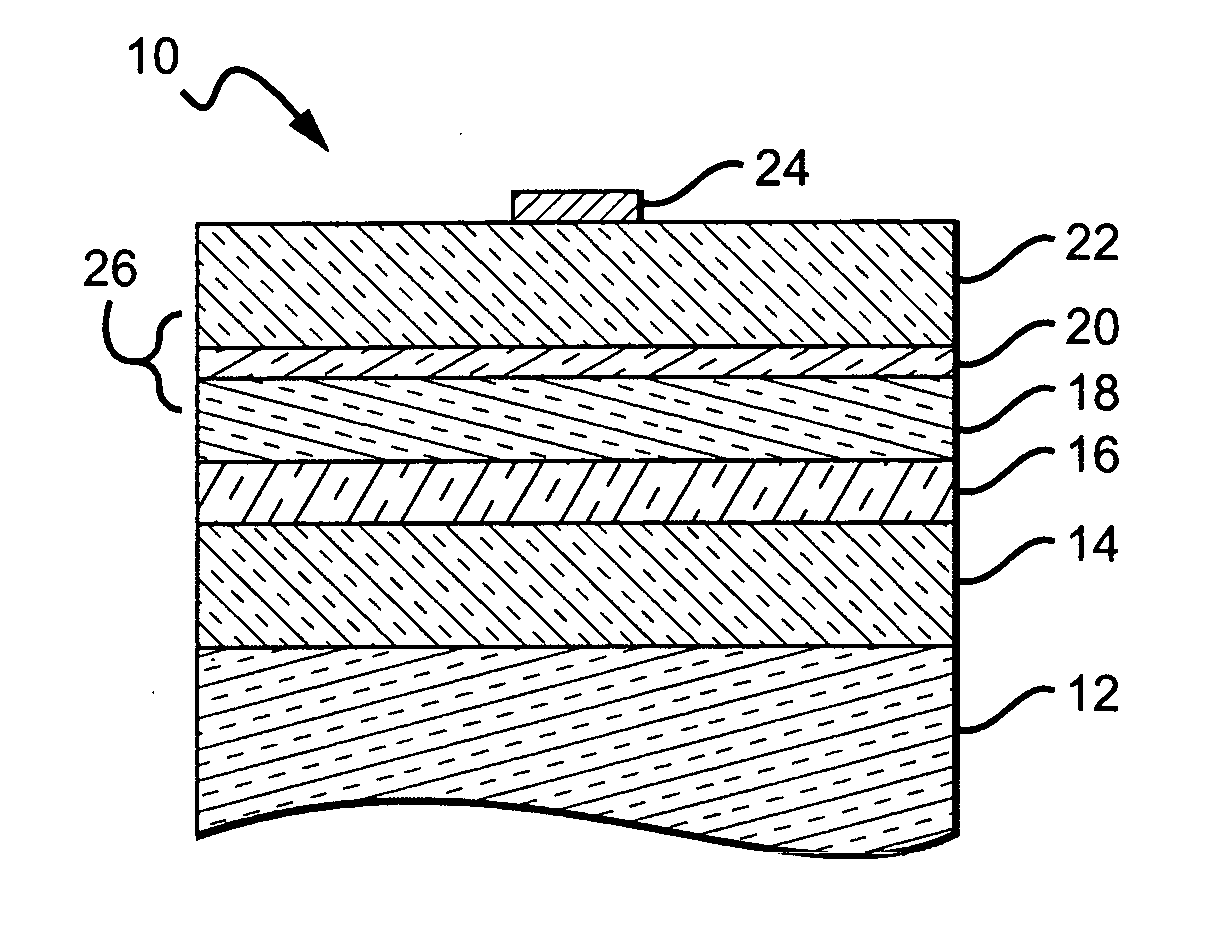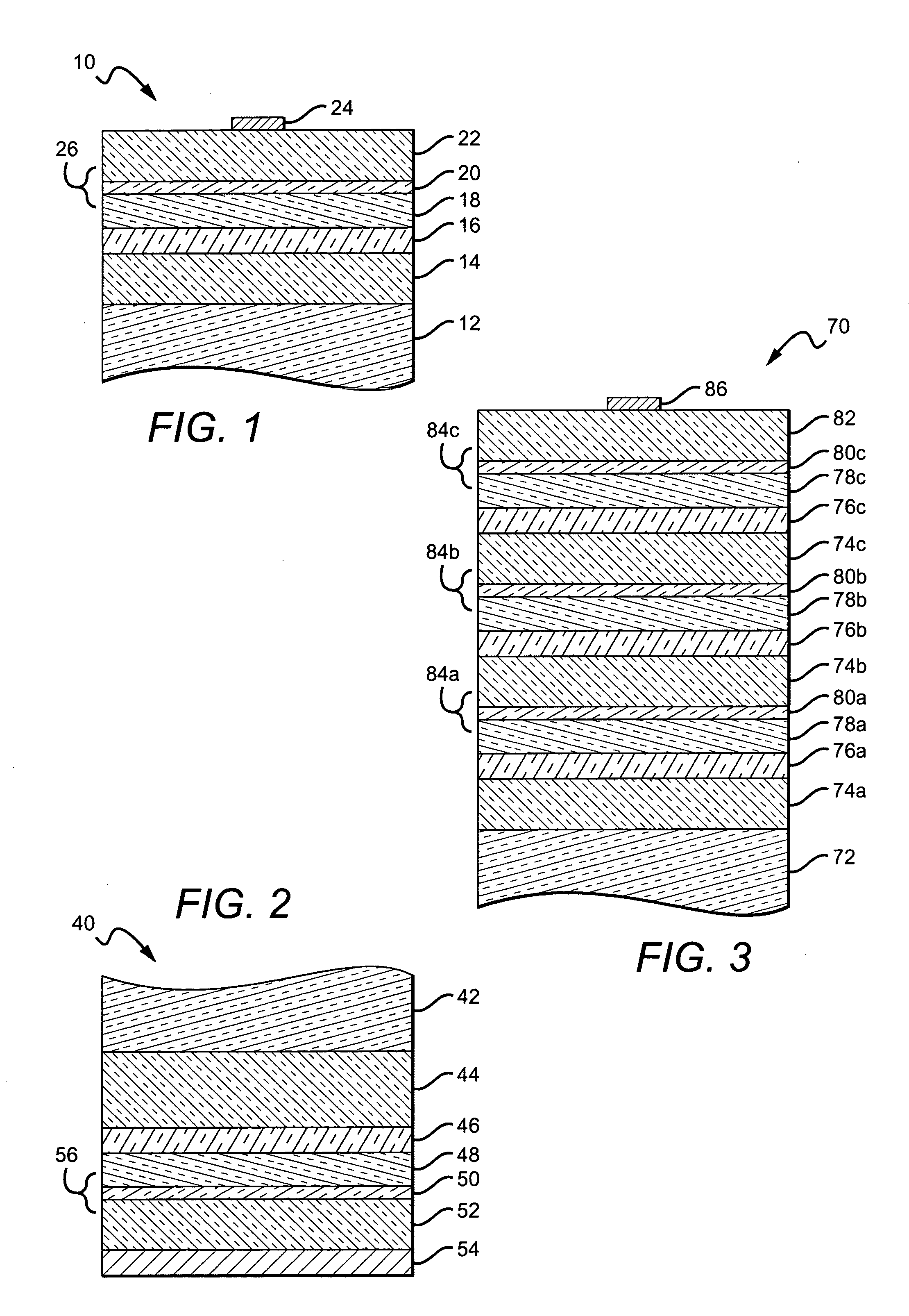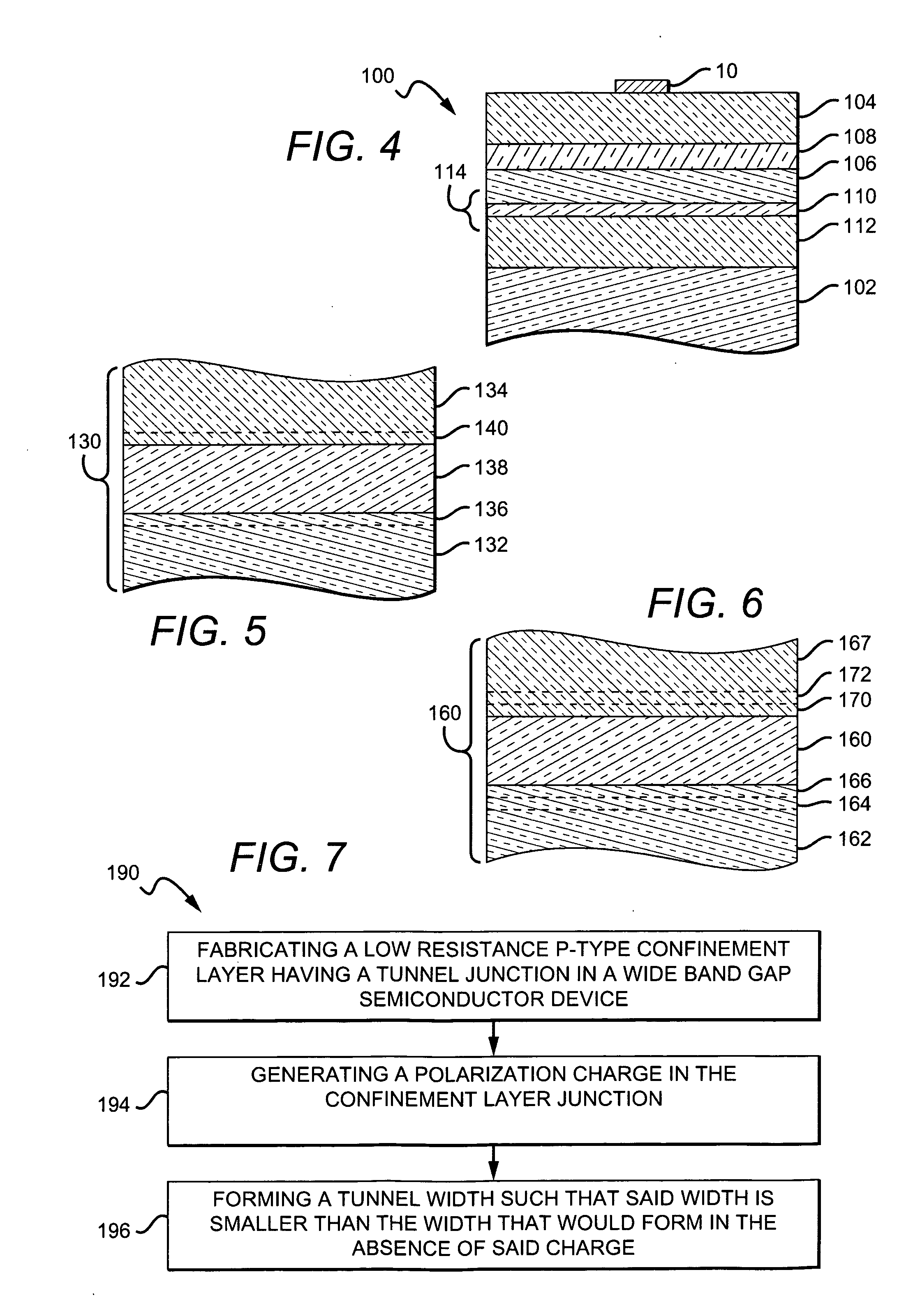High efficiency LEDs with tunnel junctions
a technology of leds and tunnel junctions, applied in the direction of semiconductor devices, basic electric elements, electrical apparatus, etc., can solve the problems of poor electrical conductivity, more resistive current flow, and non-uniform current injection into the active layer, and achieve high efficiency
- Summary
- Abstract
- Description
- Claims
- Application Information
AI Technical Summary
Benefits of technology
Problems solved by technology
Method used
Image
Examples
Embodiment Construction
[0027] The following describes devices having a construction with crystal layers grown normal to a polar direction of the crystal. In one embodiment, device layers are presumed to have the Wurtzite crystal structure with layers comprising gallium nitride (GaN), indium gallium nitride (InxGayN), and aluminum gallium nitride (AlxGayN) where 0.3≦x≦1.0 and x+y=1.0. Except where noted, the top surface of the crystal has (0001) orientation with Periodic Table group III polarity.
[0028] The devices disclosed comprise semiconductor materials typically prepared by epitaxial growth methods. Epitaxial growth methods grow uniform two-dimensional surfaces where variations in compositions and doping may be made in a third dimension as growth proceeds over time. Typically, these structures are grown by molecular beam epitaxy (MBE) or metal organic chemical vapor deposition (MOCVD). However, other equally useful methods of epitaxial growth may be used to achieve these ends.
[0029] Some of the follo...
PUM
 Login to View More
Login to View More Abstract
Description
Claims
Application Information
 Login to View More
Login to View More - R&D
- Intellectual Property
- Life Sciences
- Materials
- Tech Scout
- Unparalleled Data Quality
- Higher Quality Content
- 60% Fewer Hallucinations
Browse by: Latest US Patents, China's latest patents, Technical Efficacy Thesaurus, Application Domain, Technology Topic, Popular Technical Reports.
© 2025 PatSnap. All rights reserved.Legal|Privacy policy|Modern Slavery Act Transparency Statement|Sitemap|About US| Contact US: help@patsnap.com



